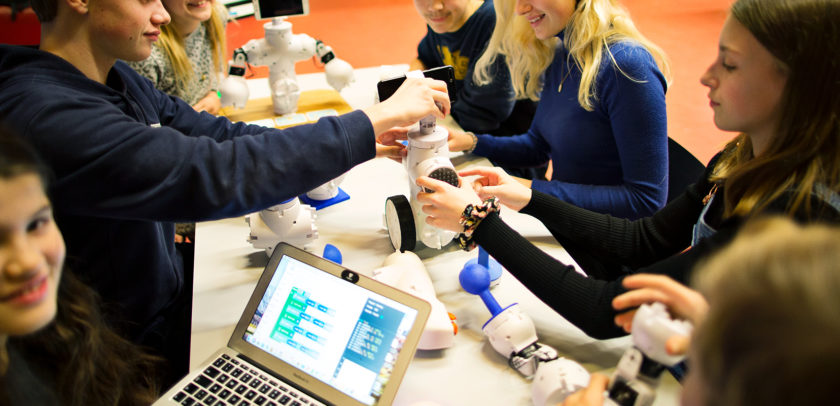Since we first launched, Shapeways has been passionate about supporting innovation in the robotics industry, developing accessible tools and high-quality, flexible materials that expand what’s possible. With Shapeways, building robots is easy – even non-experts can design and create their own parts and systems, turning their ideas into reality. To help showcase how 3D printing is transforming the robotics industry, we spoke with Shape Robotics about the ways they are using Shapeways to expand their business.
The Story Behind Shape Robotics
It all began in 2011, at the Technical University of Denmark – just outside of Copenhagen. Moises Pacheco partnered with and began collaboration with David Johan Christensen, an Associate Professor and Robot Researcher. It became clear that Moises and David shared the same vision: to develop a robot system that was extremely easy-to-use – even for younger school pupils.
The two developers were inspired by previous projects with modular robots that could repair themselves, as well as a project they had in progress with LEGO®, which was to develop new, digital products. This became Moises’ Ph.D. project, and as the years passed, interest in using the robot system Fable grew ever greater. At the end of 2015, David, Moises and Helene Christensen, a project manager, set up the spin-out company Shape Robotics and Fable was ready for the market. Their mission remains today: to make Fable as widely available as possible to students globally. This has been made possible with funding from the Technical University of Denmark and the Danish Ministry of Education – and they are well on their way. The Fable robotics system has since appeared on the top Microsoft Education Apps list and has also launched successfully with partners in the United Kingdom, USA, Italy, France and Mexico with more being added to the global list at a rapid pace.

Students learning how to build robots. Image by Shape Robotics
How 3D Printing Evolved Our Business
Using 3D printing parts has significantly expanded the usability of our product. Among other things, it gives the students a greater opportunity to use their own imagination to build robots by using the 3D printed parts in their design. Shapeways was the first 3D printing supplier that we discovered. We use the platform for all stages of production, from early stage prototyping to end use products. Now we can easily test different designs, modifying each based on our customers’ feedback and then quickly releasing the update. With Shapeways, we see greater accuracy in the parts we order and we’re able to easily scale up production, ordering any amount we need, no matter how large. For our company, dimensional accuracy is very important; so are aesthetics. Strength is also important, as our products are often being handled by students as early as third grade, which means falling on the floor often.
We’ve tried a number of Shapeways materials, including steel, versatile plastic, and fine detail plastic. The versatile plastic is the best for us, as it is more suitable for the way our products are being used, due to its mechanical properties. The value of versatile plastic and its high quality mechanical properties make this material ideal for our robots. Fable has already come so far but this is only the beginning. We are looking forward to what the future holds for Fable and Education on an even larger, global scale.
Interested in 3D Printing Robots for Your Business?
Find out how Shapeways can help make that happen.
The post How Building Robots Lets Students’ Imaginations Run Wild appeared first on Shapeways Magazine.


19 Replies to “How Building Robots Lets Students’ Imaginations Run Wild”
Comments are closed.